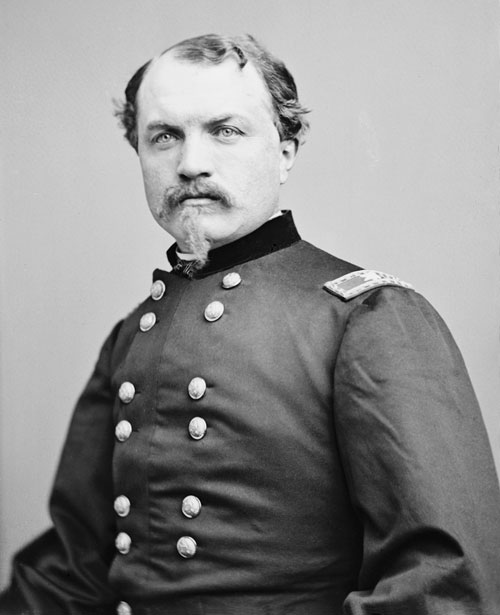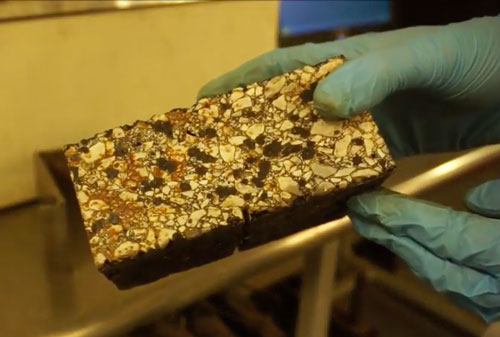One Bumpy Ride
The story of how asphalt came to define our highways, and why potholes are such a pain. The problem? Nobody wants to spend money on preventing potholes.
Today's GIF was surprisingly not the most over-the-top pothole GIF on Giphy.
“The modern dustless, glistening road surface is a thing of beauty helping the road to attain a still higher destiny. A well-paved asphalt road is the greatest missionary of civilisation at our disposal to-day.”
— A line from Successful Asphalt Paving, a 1926 book by Basque engineer Pedro Juan Larrañaga that extolled the virtues of asphalt road. (The rest of the intro can be read here.) Notably, Larrañaga’s point gets a mention in the much more recent book Roads Were Not Built for Cars, which makes the point that the vehicles that first necessitated asphalt roads were bikes, not cars.

(Free-Photos/Pixabay)
The turning point in asphalt’s history came in the late 19th century
On one level, you technically can’t invent asphalt. It’s a substance, a semi-solid variant or byproduct of petroleum, that occurs naturally on the earth, one that exists in a variety of forms, and has a largely solid structure but is effectively a very thick kind of oil. (It has a long history.)
But the gritty material that ends up on the street directly in front of your house? That required a lot of formulating and testing to get to the best of its abilities. And of course, it’s nice when you can just make your own rather than having to worry about finding a source for asphalt in the wild. (The La Brea Tar Pits?)
Used nowadays for both roads and in roofing materials (you can buy a one-gallon paint can of it, even), asphalt was initially culled from natural resources, but found its footing in the market thanks to a huge amount of engineering work put into place in the 19th century. (Long story short: It’s easy to generate asphalt as a byproduct of oil.)
The real turning point came in 1869 when, just a few years after the Civil War, a former cavalry general named William W. Averell tried to find a way to make it in the civilian world.
Around this time, Edward Joseph de Smedt, a Belgian immigrant who had experimented with different approaches to building asphalt while in France, became acquainted with the former cavalry general. De Smedt’s techniques were seen as highly innovative attempts to create a road that could stand the test of time, drew much attention abroad, and with Averell’s influence, that attention soon followed in the U.S.

William W. Averell, a key figure in the invention of modern-day pavement. (Wikimedia Commons)
Averell convinced his friends to invest in the technology, and by 1870, de Smedt had been granted a patent for a method of effectively combining different types of tar together in creating asphalt for industrial use. The inventor’s ideas were also the basis of test pavings around Battery Park and Central Park in New York City—at a cost of around $40,000 at the time ($720,000 in 2017 money).
According to last year’s Landscape as Infrastructure: A Base Primer, a book by Pierre Bélanger of Harvard University’s Graduate School of Design, the appeal of de Smedt’s tinkering could best be put this way: “De Smedt’s technique distinguished itself from its predecessors in that it synthesized 1,000 years of material developments into a simple reproducible technique.”
His early work, with the addition of later advances, is the basis for the thing that road crews the world over do, day in and day out.
But while de Smedt had the basic ideas, they weren’t perfect, and struggled with the differences between American climates and those in France—which meant that the early paving attempts around Central Park and Battery Park were a bit of a failure. The test runs simply didn’t hold up.
It was Averell's turn to take a stab at the problem. An 1896 story in The Evening Times, a Washington, DC newspaper, notes that Averell took the fundamental ideas from de Smedt and continuously improved on them.
“But he was not discouraged. He had made a good many laboratory experiments with the material itself, and he rejected some of Mr. de Smedt’s conclusions,” the article explained. “He continued Mr. de Smedt in his employ to conduct practical work and aid him, but followed his own ideas.”
It worked, and Averell deserves a lot of credit as an asphalt innovator as a result. The problem with this approach is that it led to competition—the 1896 piece came at the tail end of a legal battle between Averell’s company and a firm called the Barber Asphalt Paving Company, which basically used his company’s inventions to pave numerous New York City streets.
Once the patents expired, its use would go a lot further than that.
“The attitude was the faster it crumbles, the faster we'll get brand-new. … Nobody ever had a ribbon-cutting ceremony for fixing cracks.”
— Daniel Patrick Moynihan, the late senator from New York, discussing the mindset around road maintenance in the U.S. in a 2001 Time Magazine article. The article notes that American roads have a lot of pothole problems in no small part because of a lack of preventative maintenance and because, when the roads were being built in the first place, the U.S. cut corners to save costs. (To be fair, there was a LOT of ground to cover when the Interstate system was being built. Literally.) The problem with the lack of preventative maintenance is perhaps the largest problem of all: According to the United Kingdom’s Asphalt Industry Alliance, it costs 20 times as much to do reactive maintenance rather than taking a more proactive approach.

An example of self-healing asphalt that uses sunflower oil. (YouTube screenshot)
How molecular gastronomy influenced the latest innovation in pavement technology
We’ve gotten a lot of mileage out of asphalt, overall, but the achilles heel of the material, at least from a road standpoint, is the pothole.
Potholes are the worst. Though not all are created equal, they're produced by a combination of weather (specifically rain or other moisture that seeps into the ground, making it more susceptible to changes), vehicle traffic, and asphalt that has a tendency to crack over time. (Here’s a quick explainer of why potholes form.)
We can’t stop the rain, and it doesn’t make sense to limit traffic on roads to avoid potholes, but new technology can certainly help.
Alvaro Garcia, a researcher at the University of Nottingham in England, may be one of the world’s foremost experts on the concept of “self-healing” asphalt.
The civil engineer has been analyzing issues regarding asphalt for years, looking for ways to embed materials inside the material to help make it stronger and less prone to cracks.
In fact, while at the Swiss Federal Laboratories for Materials Science and Technology (EMPA), he helped launch a brand new discipline—“Innovative and Multifunctional Pavements,” which eyes the creation of new pavement materials that work more effectively at their jobs and have healing properties.
(Garcia isn’t alone in working on this issue, admittedly: Erik Schlangen, a civil engineering professor at Delft University in The Netherlands, took the TEDx stage in 2013 to highlight a technology that uses induction heating to heal itself.)
But the most surprising thing is where Garcia got his most recent spark of inspiration on the issue: from watching an episode of the cooking show MasterChef. While watching the show, he learned that cooks would use a spherification technique to create caviar-like lumps of oil that can then be used as part of a meal. It’s a technique used in molecular gastronomy to help capture the essence of a specific flavor (here’s an example of how it’s done).
Garcia, however, saw something else in the episode: An opportunity to use sunflower oil to make asphalt a lot better. His idea? To take capsules of the oil and embed them directly inside of a block of asphalt, so that when the block starts to crack, the capsules break open and act almost as a glue, creating a self-healing mechanism that helps to rejuvenate the properties of the material after a cracking incident. Here’s a video of Sam Leworthy, a Nottingham Ph.D. candidate, explaining the process:
This invention, which Garcia calls Capheal, could potentially change the way that asphalt is made around the world.
“Our preliminary results showed that the capsules can resist the mixing and compaction processes without significantly reducing the physical and mechanical properties of asphalt and they also increased its durability,” Garcia said in a university news release. “More importantly, we found that the cracked asphalt samples were restored to their full strength, two days after the sunflower oil was released.”
While it won’t help a road last forever, it will last 12 to 16 years, which is about a third longer than traditional pavement lasts. It’s going to get a bit more testing in the years to come in the U.K., and from there, it might eventually take over the world.
But one of these days, we might just be driving on asphalt partly made the way that fine chefs isolate individual flavors.
Maintaining roads is a challenge no matter where in the world you are—Europe or the U.S., Asia or South America.
Part of the problem is the price tag; the other part is the scope of the problem (according to one analysis, 32 percent of U.S. major urban roads sit in substandard conditions), and the fact that such a scope ultimately requires someone to pay—and inevitably, it’s going to be the person driving over that pockmarked strip of asphalt.
“Prevention is cheaper than cure,” former Treasury Secretary Larry Summers said earlier this year in comments reported by the Brookings Institution. “Waiting for the road bridge to collapse is much more expensive than buttressing the bridge before it collapses.”
New technology could certainly help—certainly it’ll be nice to ride on sunflower-oil-seasoned roads someday—but when it comes down to it, the biggest problem here is the lack of investment in a problem that’s anticipated to get worse before it gets better.
The U.S. has a massive safety problem in front of it, one that costs drivers as much as $3 billion per year in vehicle repairs and damages for consumers, but would also cost $170 billion annually to properly fix, according to one estimate.
It’s kind of like the Amtrak problem, except you can’t make the excuse that you don’t use it, so therefore you don’t need to spend money on it.
A great cautionary tale on this front can be seen in South Africa, once a country with some of the most pristine roads in the world. For years, South Africa had a solid track record on the maintenance front, but after a season of heavy rainfall around 2009, potholes became a common sight and a major headache.
What happened? Simple: The country let its guard down.
“Over the past few years, the development of potholes in South African roads has accelerated considerably, leading to serious concern and wide media coverage,” explained a 2015 e-book on the issue published by CSIR Built Environment, a federal agency. “The increase in pothole damage can be attributed primarily to reduced preventative maintenance being applied to many roads, combined with particularly wet periods during rainy seasons and rapidly increasing numbers of heavy vehicles.”
Asphalt is finicky, and while nobody will win awards for maintaining it properly ahead of time, maybe we should start handing some out.
Perhaps we could call the award “The Tedium Award for Proper Preventative Road Maintenance.” (Submit your entries.)
:format(jpeg)/2017/11/tedium110717.gif)
/2017/11/tedium110717.gif)

/uploads/ernie_crop.jpg)